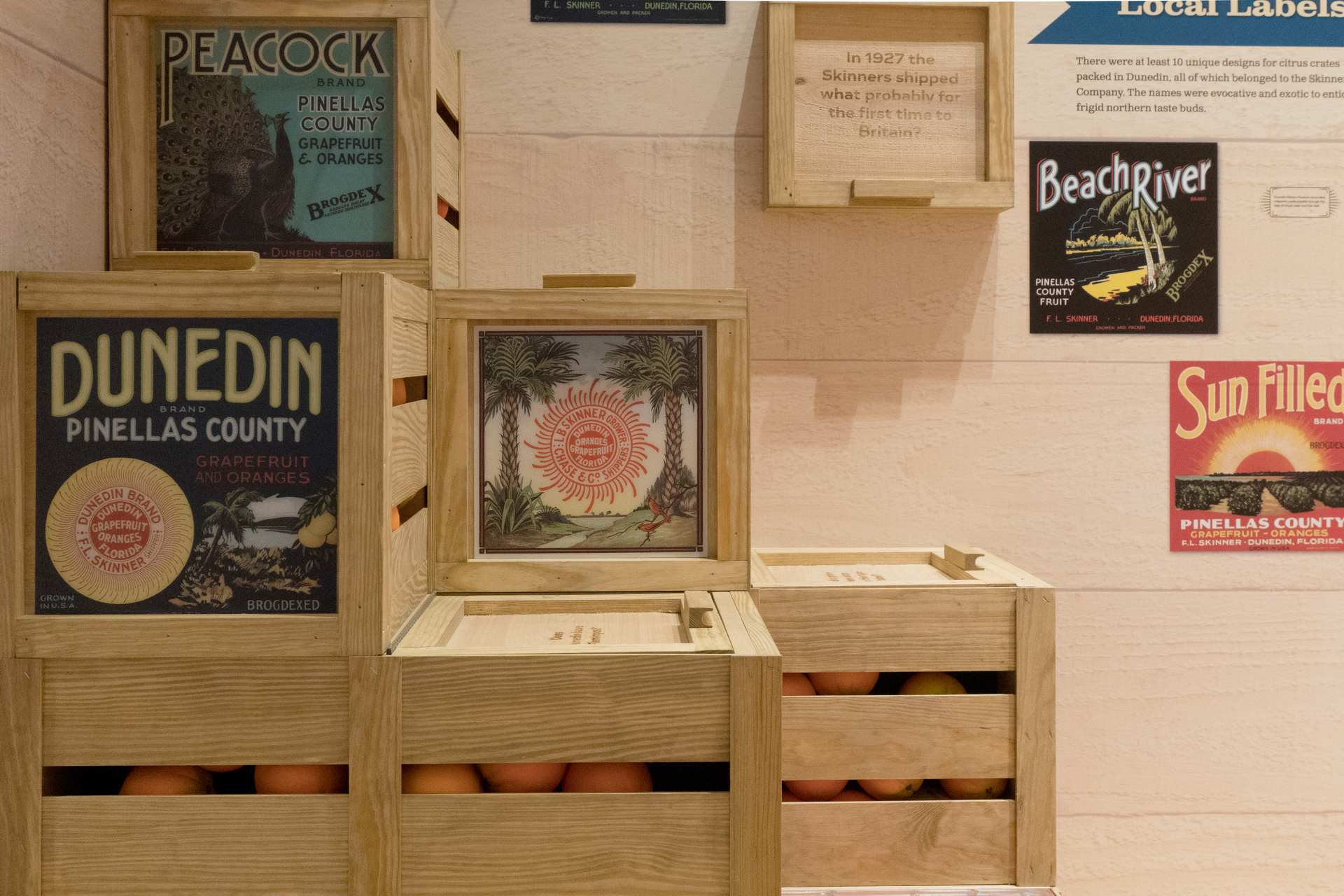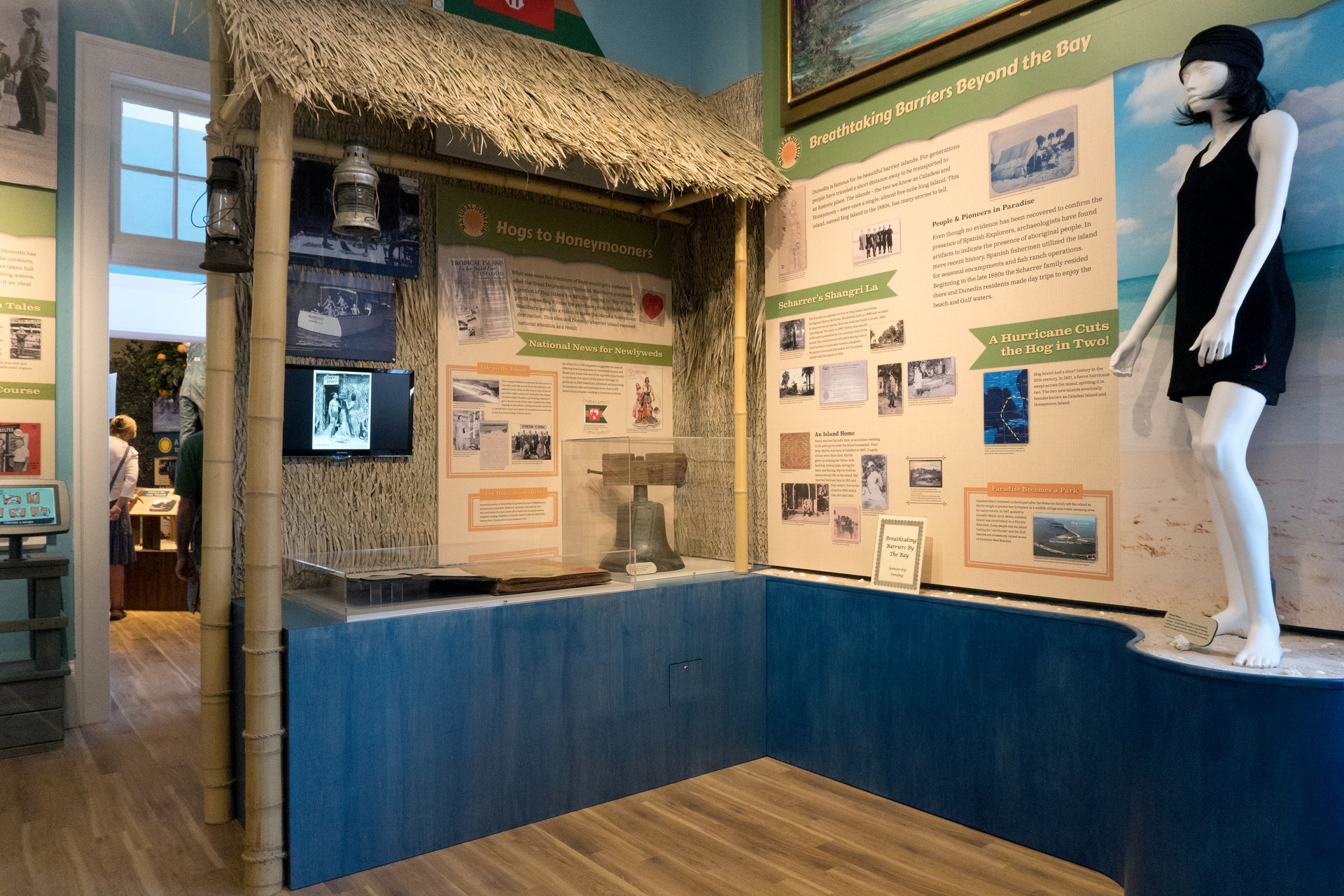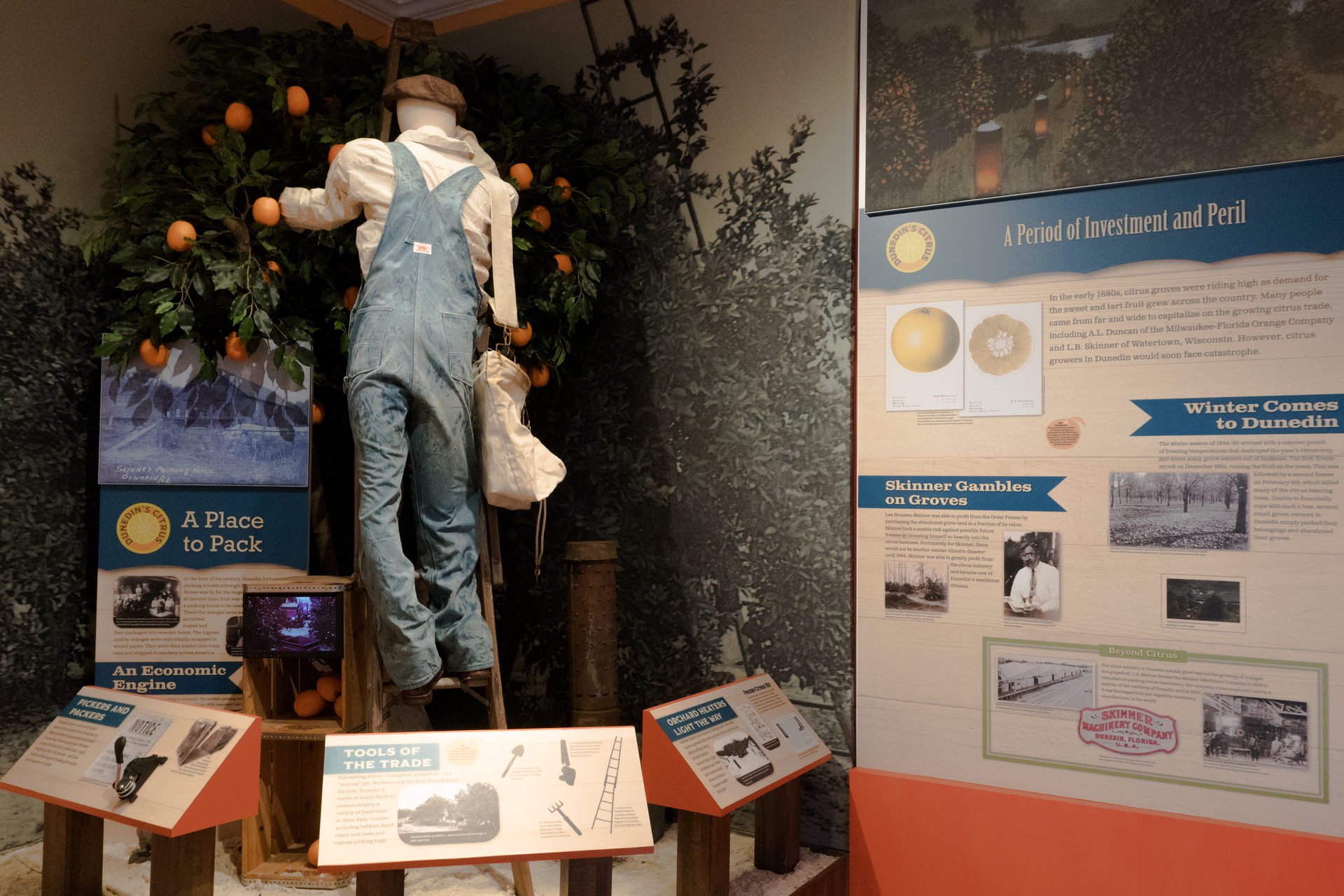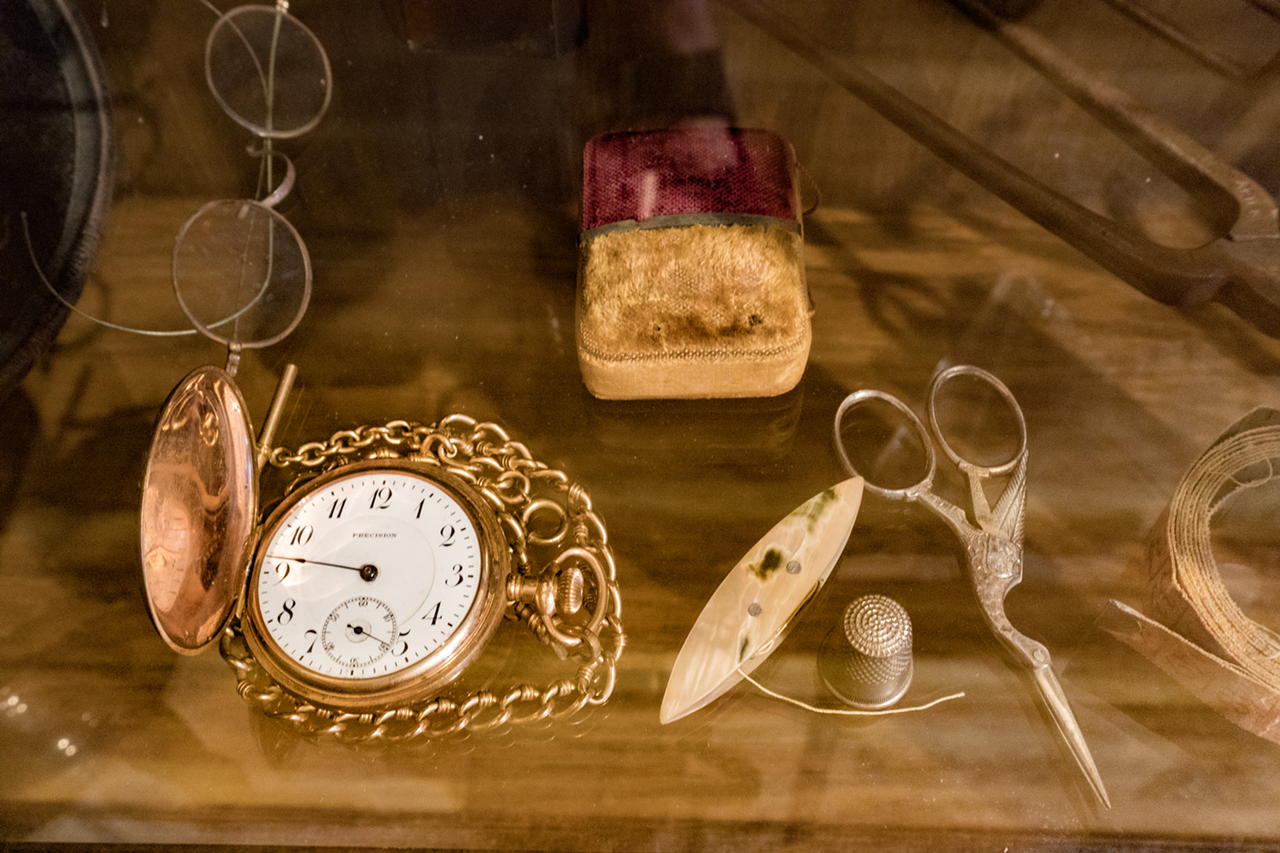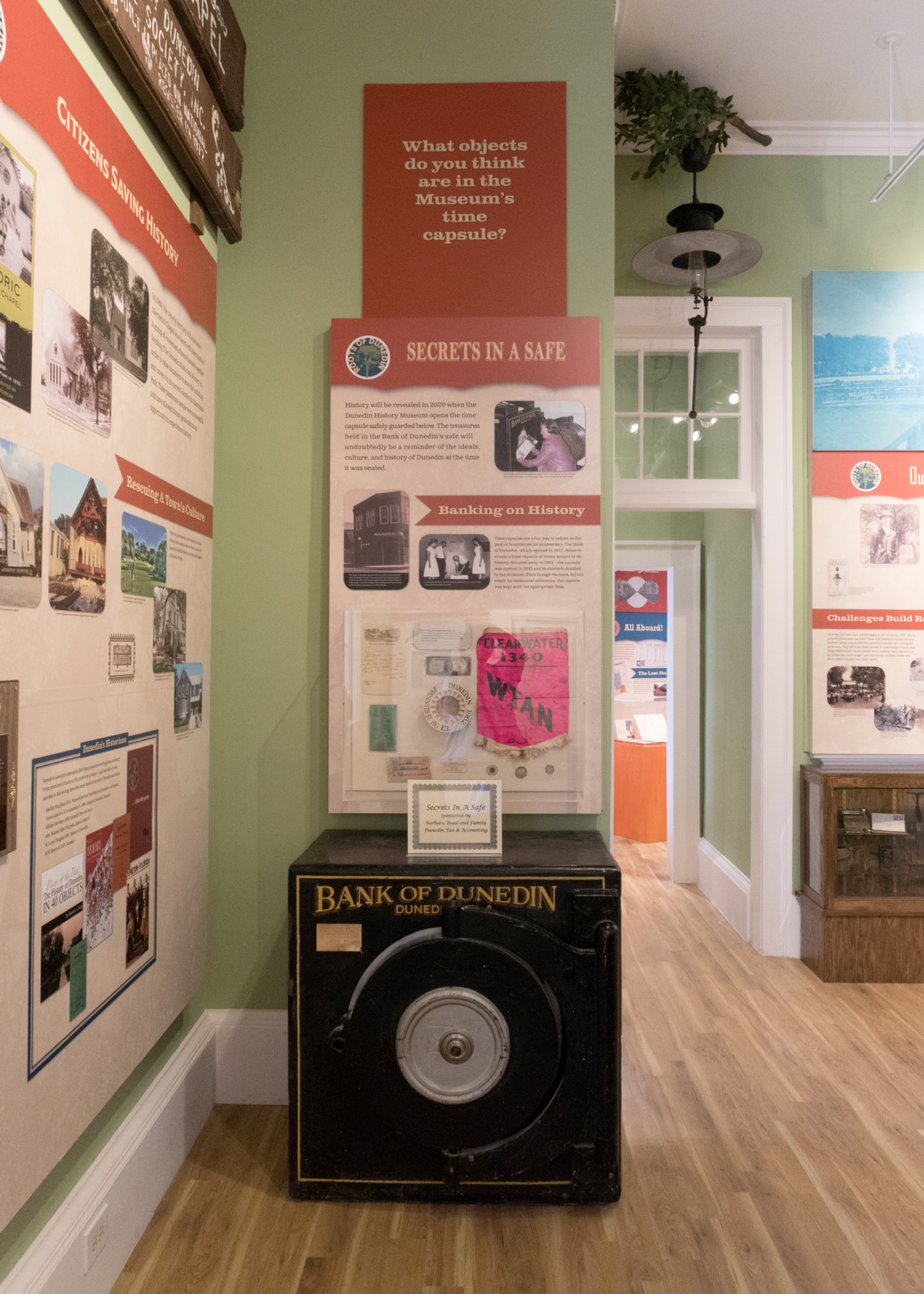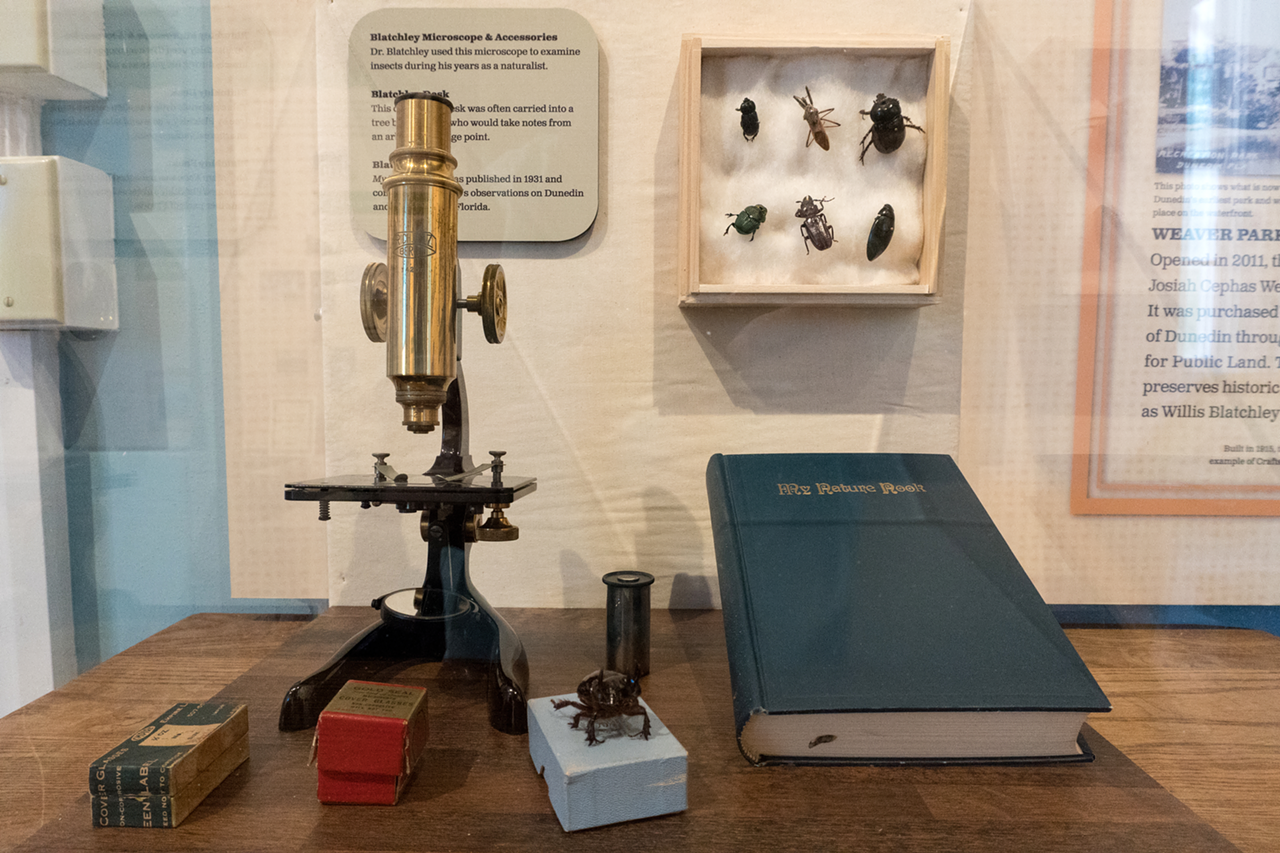If local historian Vincent Luisi could go back to any time in Dunedin’s history, he’d go back to the beginning.
It was the early 1870s, and Dunedin’s legendary Scottish pioneers, J.O. Douglas and James Somerville, had just arrived in town. The two decided to start a general store together, but they had some competition. A few months prior, George Jones had established his own general store at the end of Main Street. He’d even named the town Jonesboro in his honor.
Douglas and Somerville apparently didn’t like the name, because they hatched a plan that would eventually spell the end of Jonesboro. They started by moving their store into a large, two-story building on the waterfront and building a pier out into the bay. Then they petitioned the government to start a post office in their general store. Once their request was granted, in 1878, Dunedin had both its name and its first post office.
Despite the presence of a beautiful waterfront, a good general store, and a post office, life wasn’t easy for Dunedin’s pioneer families. There was no air conditioning or refrigeration, and most people had to make their own clothes and furniture. Pioneer life was the harshest test of self-sufficiency one could imagine. It’s so different from modern life that it’s kind of hard to imagine.
“I really would like to see the way pioneers lived in the town, the old Main Street with the oak trees rather than brick paved roads, wagons still traveling through town, and just get a feel for what the town was,” says Luisi, “I have met, in my time, a few of the early pioneer family members, and I always wish there was a way to put a jack in their brain and connect it to me so I can visually see what they saw in their memories.”
I always wish there was a way to put a jack in their brain and connect it to me so I can visually see what they saw in their memories.”
Vincent Luisi became Dunedin’s historian in 1996. He had been working at the Tampa Bay History Museum in Tampa, but was living in Dunedin.
“Like any interested individual in the community,” he says, “I wanted to know more about my town.” For many years, he volunteered at the Dunedin History Museum on the weekends after working at the Tampa Bay History Museum all week. He learned a lot about Dunedin during this time. It was enough that when the board wanted to extend the museum’s hours, they hired Vinnie to act as the museum’s first director.
So what’s it like being a small town historian?
“People are interested in the history of their homes and who owned it previously,” says Vinnie, “so we’re constantly getting calls about that.” People also come into the museum to research their family history. Meeting the people that live in Dunedin is Vinnie’s favorite part of the job, he says.
When he’s not helping people research their homes and their family’s history, Vinnie is developing exhibits and securing funding for the museum.
“Believe it or not, it’s always busy,” he says.
His latest project, the renovation of the Dunedin History Museum, came courtesy of a state grant. The $600,000 expansion project, which began on July 31, 2017, is finally complete.
“I feel like we have brought our museum from the early stages of a small museum up to the highest level of professionalism,” Luisi says. “We’re very interactive, our explanations are very updated, it’s family-oriented, and it’s really quite a place where you can spend time now and feel like you really got something out of it.”
Last Saturday, museum members poured in through the museum’s new entrance for a members-only preview of the newly renovated Dunedin History Museum. At the front desk they were each given a passport, one of the museum’s new interactive programs. The passport is full of clues that lead guests to hand stampers scattered throughout the museum. If you find them all, you win a special prize, says Vinnie.
The museum consists of three galleries, each concerned with a different aspect of Dunedin’s history.
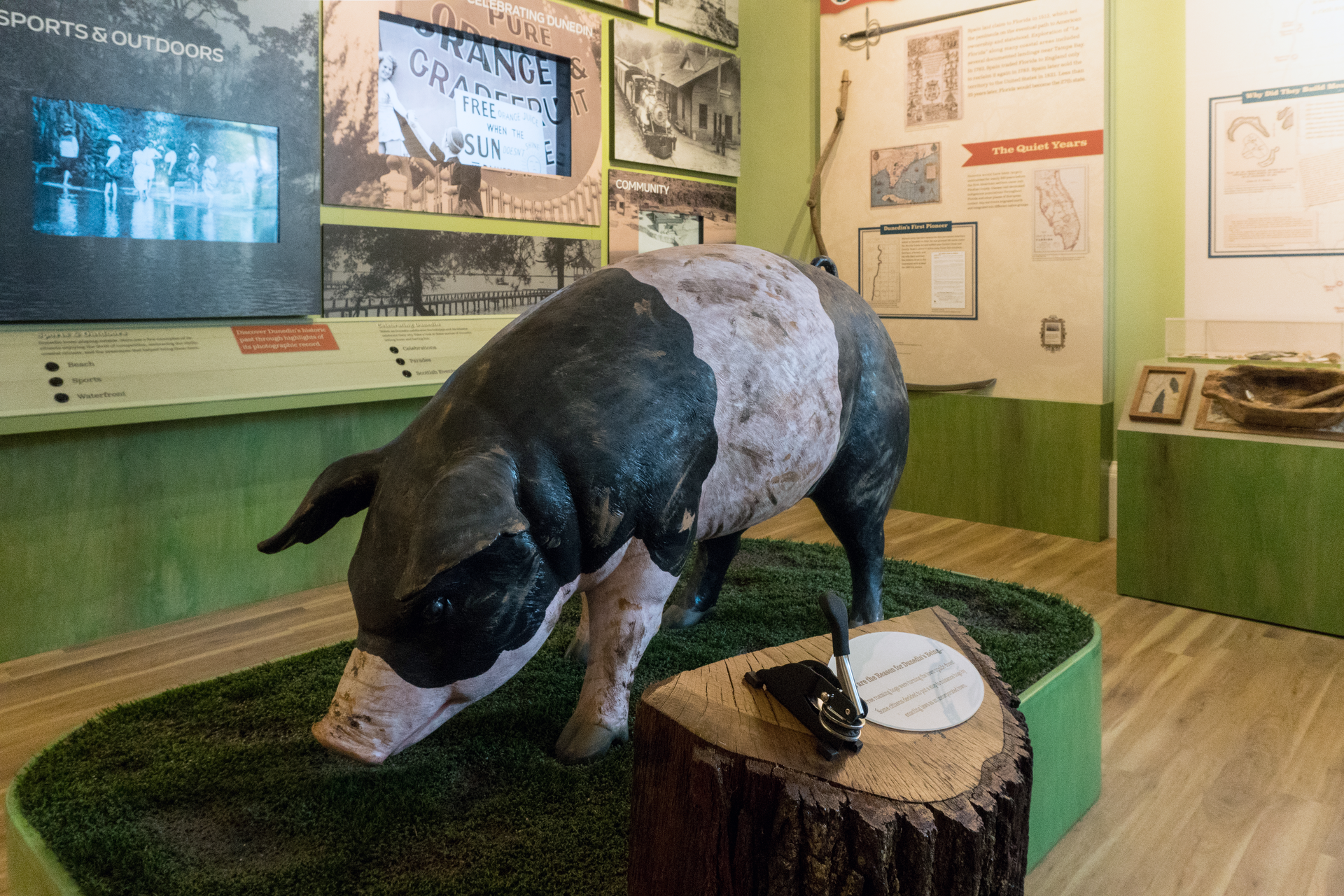
The first gallery you enter is all about Dunedin’s early years, starting with the Tocobaga Indians, then moving forward to Dunedin’s early pioneers, early development, and the hog problem that made a city. A small cubbyhole off to the side is dedicated to the Dunedin Times (1924-1966). Visitors can sit down at a desk and peruse old copies of the paper, which is now totally digitized and presented in tablet form here.
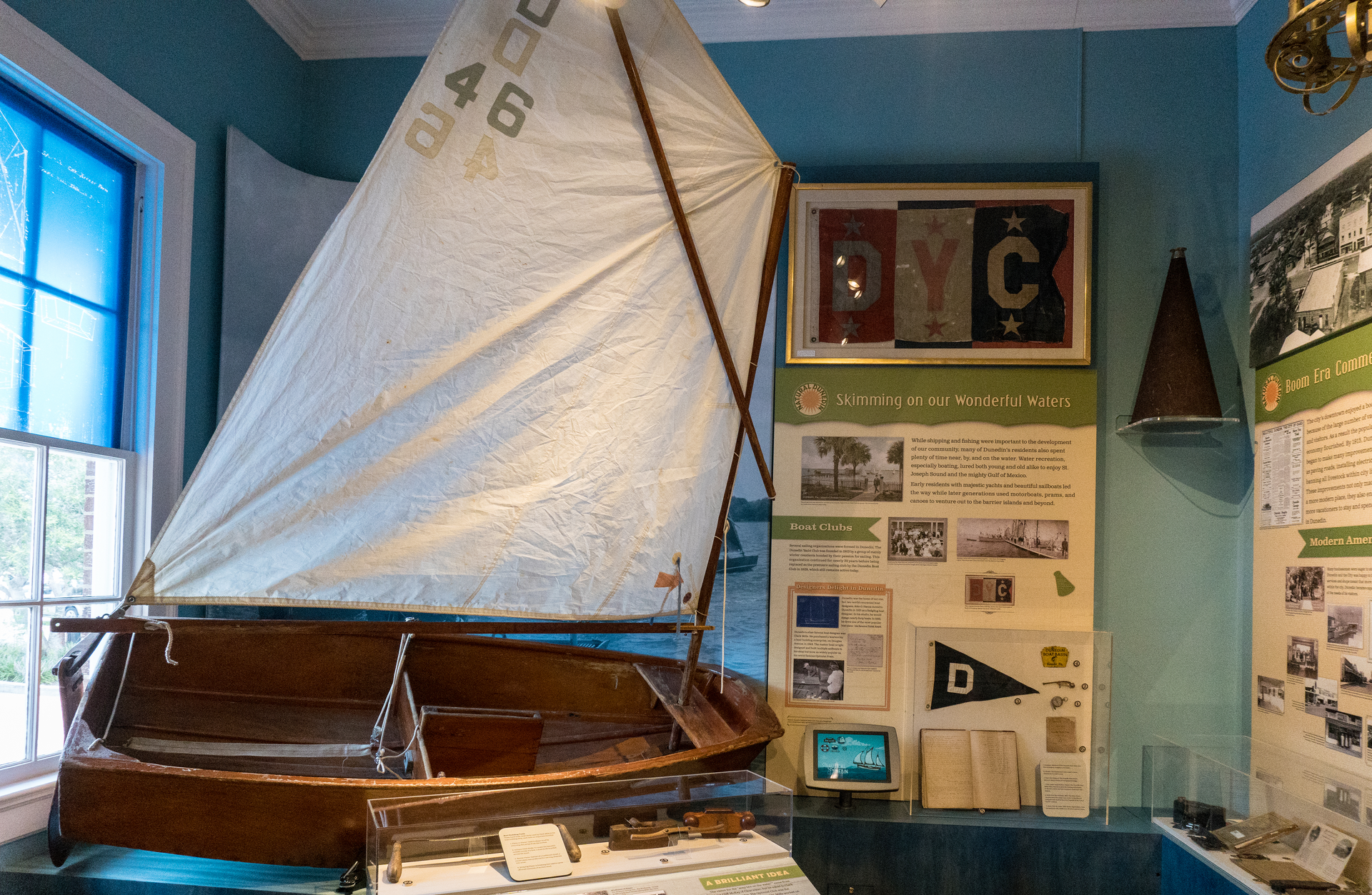
The second gallery is devoted to outdoor recreation. With its beautiful scenery and year-round good weather, Dunedin has always been big into golfing, baseball, sailing, fishing, walks in the park and days at the beach.
“We have photographs of early sports that go back to the 1890s with a photo of Dunedin’s first baseball team, and early pictures of our award-winning golf course — the Donald Ross course,” says Luisi, “and of course we were champions, for many years, in shuffleboard.”
The Dunedin History Museum pays tribute to these traditions with visually stunning displays, including an actual pram in one corner, paired with boat-building tools and a monitor that lets you scroll through Dunedin’s historical sailing photos.
On the other side of the gallery, a small tiki hut is paired with a history of Honeymoon Island and items from C.M Washburn’s personal scrapbook (Washburn is the man who changed the name of Hog Island to Honeymoon Island in the 1930s).
In between, you can learn about Dunedin’s tourist industry, early hotels and the area’s first snow birds.
Moving into the third gallery, you pass through a small room devoted to Dunedin’s oral histories. These were still in development when I visited. But when finished, Luisi says you will be able to hear/see Dunedin residents “talk about their lives in Dunedin, the changes and everything else, so people can see what Dunedin was like at the time.”
This final gallery focuses on the railroad and Dunedin’s role in the citrus industry.
“We have quite a bit of knowledge and information and artifacts developing the history and the story of Dunedin’s involvement with the citrus industry,” says Luisi, “from the beginnings in the 1880s up until the concentrate plant, which is now owned by Coca-Cola.”
There is a lot to see at the Dunedin History Museum. One could easily spend an hour here looking at all the artifacts and old photos, participating in the passport challenge, perusing the Dunedin Times archives, and reading the museum displays.
Seeing Dunedin’s history presented in such a visual manner allowed me to experience the town’s history in a way I never have before. And even though I’d read up on Dunedin’s history prior to visiting the museum, I still learned new things about Dunedin here. So the next time you’re in downtown Dunedin for dinner, a parade, a concert, or whatever, consider adding a trip to the Dunedin History Museum to your itinerary, especially if you have out-of-town guests in tow.
Dunedin History Museum | 349 Main St., Dunedin. Tues.-Sat.: 10 a.m.-4 p.m. 727-736-1176, dunedinmuseum.org

